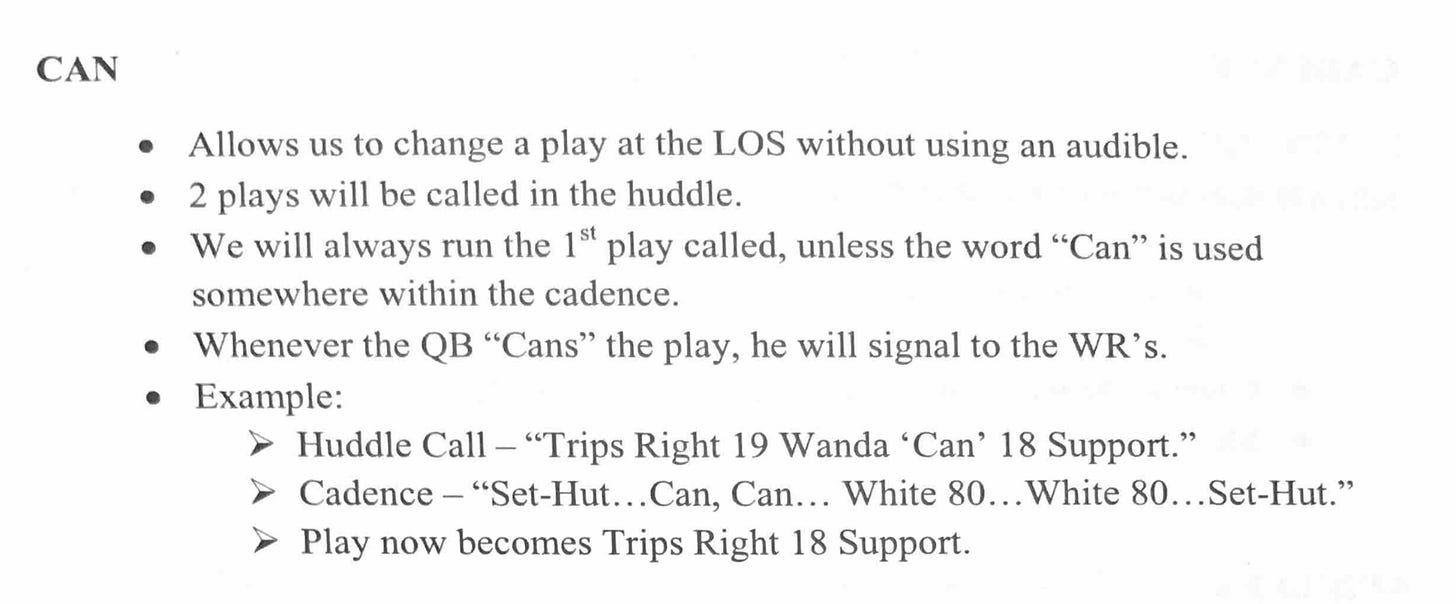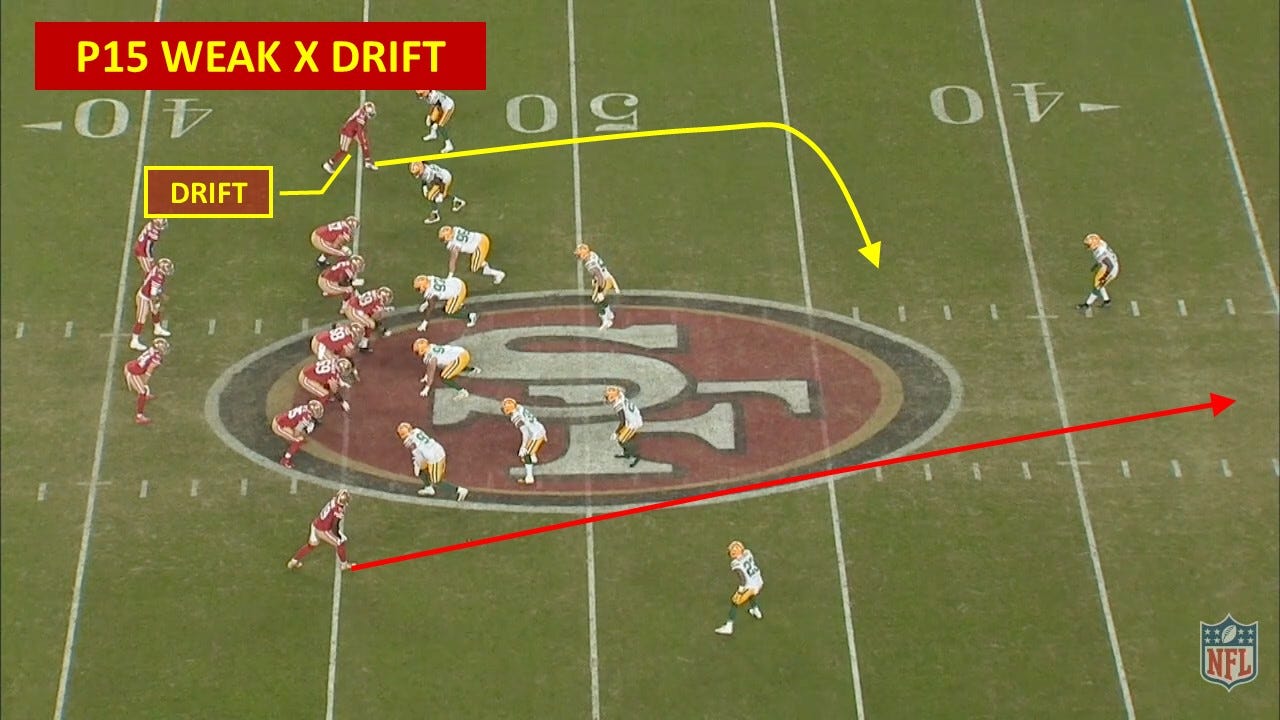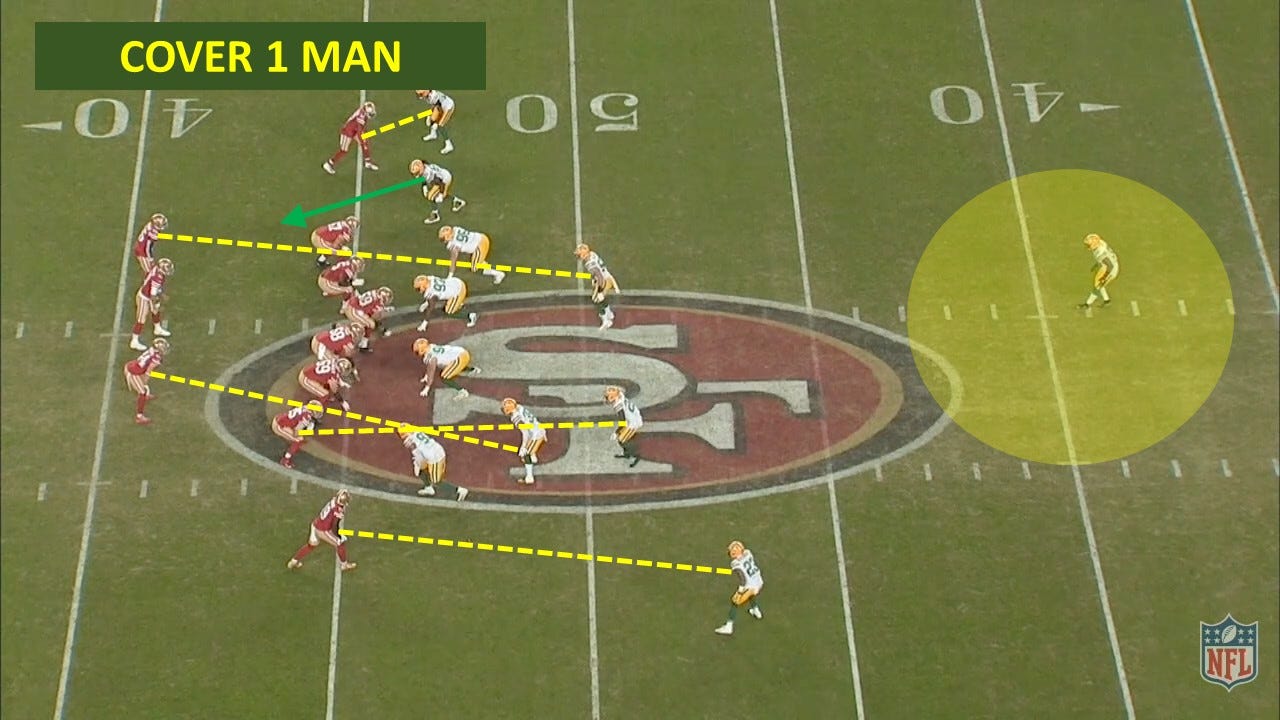49ers film room: how and why the 49ers audible from the run to a play action pass
Film room today looks at the way the Shananan offense gets from a run call to play action pass in the pre-snap portion of the play.
It’s no secret that the Kyle Shanahan coaching tree loves calling play action passing concepts built off of their run game concepts. It’s an integral part of how the coaching tree builds their offense week to week and season to season and it can be very effective when it’s combined with the outside zone running scheme in particular.
For a team like the 49ers, play action has become an integral part of an offense that likes to marry its run concepts and blocking schemes with passes that create 15-20 yard explosive plays and give the quarterbacks easier reads than straight drop back passing.
The central idea is to marry the run game to the play action passing game and make everything look the same whether it is a run or a pass. 49ers offensive lineman Trent Williams, speaking to Trench Warfare’s Brandon Thorn, stated that “In Kyle’s scheme, play-action looks exactly like the run, which makes it so hard for defenses to key in on.”
In a coaching clinic on CoachTube, University of Arizona head coach Jedd Fisch (who was the Rams assistant offensive coordinator in 2018 and 2019 under Sean McVay) stressed the importance of running and utilizing play action passing from identical formations.
“What we’re able to do is get in that exact same formation, and make everything look exactly the same, and then turn it into a keeper…Aligning in the exact same formation, same start, first five steps, is it a run, is it a play action pass, or are we setting up in the pocket to take a shot down the field and make them pay as they’re trying to defend the run game, or they’re trying to defend the play action and keeper game. So as everything looks the same, now we’re able to set up maximum protect, and take a shot down the field.”
In Shanahan’s time with the 49ers, this has become critical component of the offense as the quarterback position for the majority of the time has been less than ideal with injuries and subpar quarterback performances in the playoffs.
For example, per Pro Football Focus, in 2020, Jared Goff had 214 play action passing attempts and in 2021, Matt Stafford had 152. Goff had the second best win-loss record behind Tom Brady from 2017 to 2020 and was an efficient passer. Yet Stafford was more efficient with about 70 less pass attempts. Play action passing is a good tool to master for less efficient quarterbacks.
One of the signature plays in this scheme is a straight drop back play action passing game concept called “drift.” Straight drop back isn’t the technical term for this type of play action concept but it’s useful to differentiate it between that type of drop back and a “keeper” play action pass where the quarterback boots out naked on a rollout.
Drift is a quick hitting play that hits in the zone vacated by linebackers flowing toward the run action. Often the window the quarterback hits is relatively large because the drift route is typically run behind those linebackers closing the line of scrimmage.
The drift route is usually run to the backside of the run call but can sometimes be run to the play side and is a quick 7-step vertical stem glance route that breaks quickly inside behind the linebackers.
In the play call itself, “drift” is usually paired with a run call. The quarterback can audible to the pass versus certain defenses. Here’s how Los Angeles Rams head coach Sean McVay explains it:
What McVay is talking about, looking for that “certain premier look” to run against, is the defensive alignment of the safeties. It’s easier to run versus two deep safeties because that is one less defender in the box the offense has to block.
In the playbook diagram above, the the play call is 14 or 15 “Man” with a “can” call to pass 14 or 15 man X drift. Versus two deep safeties or middle of the field open (MOFO), the offense will stay with the run call (14 or 15 Man) and versus one deep safety or middle of the field closed (MOFC), the quarterback will “can” the first play call to the passing play, “drift.”
The “can” call is done at the line of scrimmage after the quarterback assesses the defensive alignment. Typically, there will always be two plays called in the huddle and the “can” call allows the quarterback to change the play without tipping anything off through a more descriptive audible in the cadence (colors are typically associated with calling an audible at the line of scrimmage).
The quarterback “cans” the call by yelling out “CAN CAN” while getting set at the line of scrimmage. He then gestures to the sides of his helmet to alert the wide receivers that play has changed. Listen carefully to the field noise and you can hear Garoppolo yelling this out before the snap and making the gestures with his hands.
The 49ers have a run a called and upon seeing the safety walk up to the line of scrimmage in the Packers pre-snap alignment, Garoppolo “cans” the play to drift just before the snap. This puts Emmanuel Sanders as the X receiver on the drift route.
The Packers played single high cover-1 man coverage behind a 5-man rush.
The combination of the fifth defender adding to the rush plus man coverage behind it leaves the middle of the field wide open for Garoppolo to throw the drift route.
Here’s another example above of Garoppolo changing the play at the line of scrimmage with a can call. It’s not clear to us what the play calls are as we do not have insight into that but as a former 49ers offensive lineman once told me, the “can” is changing the play side of the run away from un-blockable run support, usually a corner or a safety. Since the corner is down to the left of the offensive formation, there is no one to account for him.
It could also be a “dummy can” that Shanahan likes to use to see if the defense might shift or move around prior to the snap. Whatever it was, it was the right call as the toss play went for an explosive 20+ yard run.
In the next article in this series, we’ll look at the different ways the 49ers run their “drift” concept.










